
Roots
The conversation surrounding hair, especially those textures that spiral and coil, often begins with an immediate focus on products or styling. Yet, a more profound understanding calls for a journey inward, beneath the surface of what we see, to the very elemental architecture of the hair strand itself. To truly grasp the needs of textured hair, we must first recognize its foundational distinctions, the subtle yet significant variations in its physical make-up that shape its entire existence. This initial exploration will guide us through the inherent qualities that distinguish these beautiful strands, setting the stage for a care approach that honors their natural state.

Hair Anatomy and Physiology Specific to Textured Hair
Each hair strand, regardless of its curl pattern, arises from a follicle, a tiny pocket within the skin. However, the shape of this follicle dictates the ultimate form of the hair that emerges. For textured hair, particularly those with tighter curls and coils, the follicle tends to be more elliptical or flattened, rather than the round shape associated with straight hair.
This distinctive follicular geometry imparts a unique curvature to the hair shaft as it grows, resulting in its characteristic spirals and bends. These bends are not merely aesthetic; they hold significant implications for the hair’s overall health and its responsiveness to external elements.
The hair shaft itself consists of three primary layers ❉ the medulla, the cortex, and the cuticle. The Medulla, the innermost core, may be discontinuous or even absent in finer textured hair. The Cortex, the central and thickest layer, is primarily composed of keratin proteins and provides the hair’s strength and color. In textured hair, the distribution of these cortical cells can be asymmetrical, contributing further to the hair’s curved nature.
The outermost layer, the Cuticle, comprises overlapping, scale-like cells that protect the inner cortex. In textured hair, these cuticle scales may not lie as flat as they do on straight hair, particularly at the curves and twists of the strand. This subtle lifting can influence how the hair interacts with moisture and external agents.

Textured Hair Classification Systems
The spectrum of textured hair is vast, ranging from gentle waves to tightly wound coils. While various classification systems exist, such as the widely known curl pattern types (2, 3, and 4, with sub-categories A, B, C), it is important to remember these are descriptive tools, not rigid definitions. They serve as a starting point for identifying general characteristics, helping individuals and care providers understand common tendencies.
However, true understanding moves beyond simple categorization to a recognition of individual variation. A study highlighted the unscientific nature of classifying hair based on race (Asian, Caucasian, African) and instead proposed a more reliable geometric classification system using measurements like curve diameter, curl index, and number of waves.
These systems assist in recognizing that even within the same curl type, differences in strand diameter, density, and porosity can dramatically alter care requirements. For instance, a person with 4C hair might have fine strands, while another might have coarse ones, each demanding a different approach to hydration and handling. The objective remains to personalize care, seeing beyond the label to the unique qualities of each individual’s hair.

The Essential Lexicon of Textured Hair
A shared vocabulary allows for a clearer discussion of textured hair needs. Beyond curl patterns, terms like Porosity, Density, and Elasticity form the bedrock of understanding. Porosity, for example, refers to the hair’s capacity to absorb and retain moisture, which is heavily influenced by the cuticle’s condition. Textured hair, particularly those with tighter curls, often presents with higher porosity due to the lifted cuticle scales at the bends of the hair shaft.
This means moisture can enter easily but also escape with equal swiftness, making consistent hydration a primary concern. Density, on the other hand, describes the number of individual hair strands on the scalp, impacting how products settle and how much volume the hair possesses. Elasticity, the hair’s ability to stretch and return to its original state, speaks to its overall health and resilience. Understanding these terms empowers individuals to select products and techniques that truly serve their hair’s inherent characteristics.
The foundational structure of textured hair, from its follicular origin to its layered shaft, dictates a unique set of care considerations.
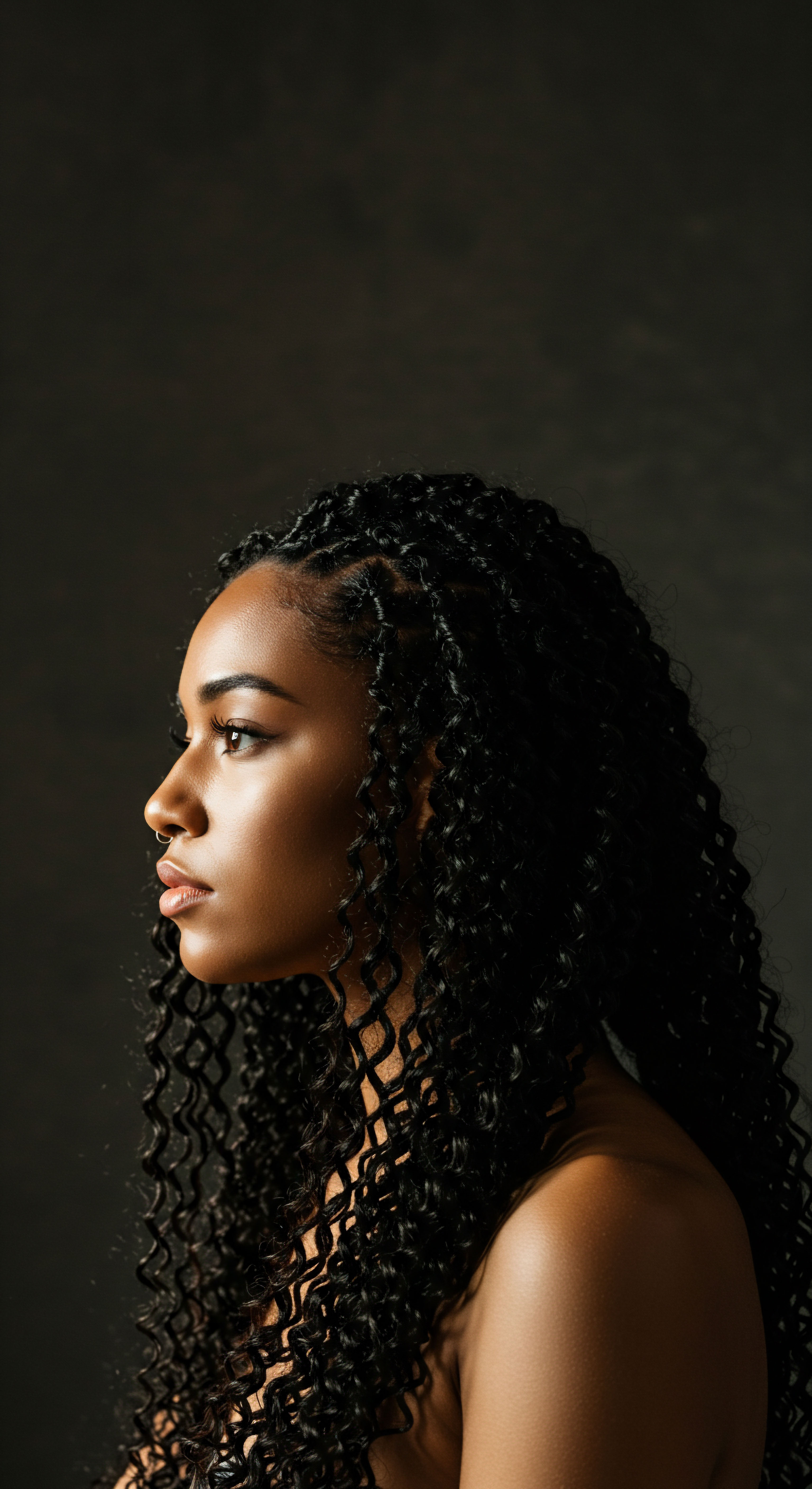
Hair Growth Cycles and Influencing Factors
Hair growth occurs in cycles, typically divided into three main phases ❉ anagen (growth), catagen (transition), and telogen (resting). The length of the anagen phase largely determines the maximum length a person’s hair can attain. While these cycles are universal, influencing factors such as genetics, nutrition, and overall health can alter their duration and the quality of hair produced.
For textured hair, particular attention to diet and scalp health can support optimal growth, as the inherent fragility of these strands means that healthy growth from the root is paramount. Environmental elements, including humidity, also play a significant part, affecting the hair’s moisture balance and its physical behavior.
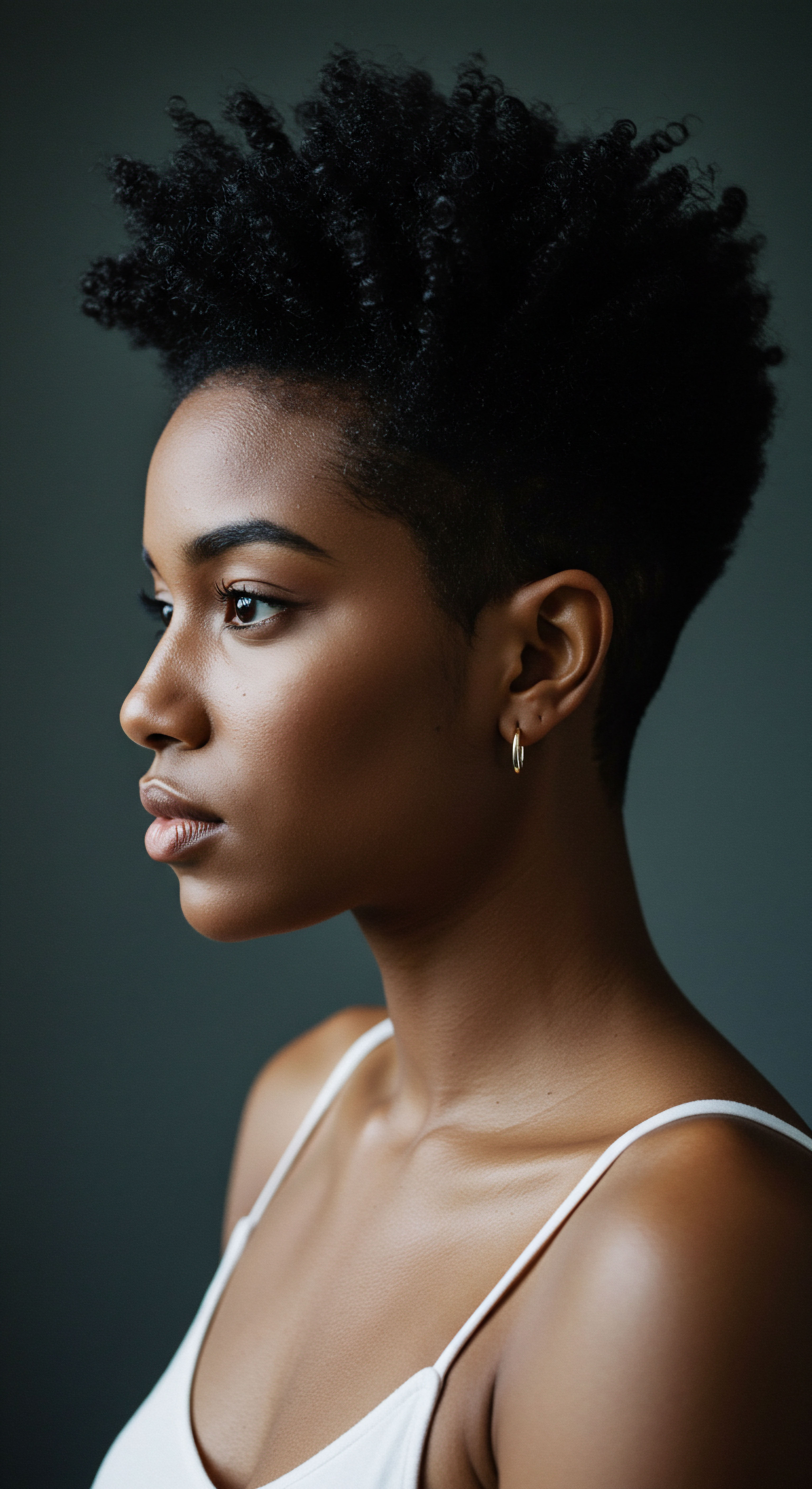
Ritual
With an appreciation for the intrinsic nature of textured hair, we turn our attention to the deliberate actions and routines that bring its true beauty to life. Daily practices and periodic applications, when chosen with gentle wisdom, shape the very experience of caring for these unique strands. This section is an invitation to explore the practical wisdom of hair care, where techniques and methods are approached with thoughtful guidance, moving beyond the superficial to a deeper connection with our hair’s living needs. We will explore how understanding hair’s structural nuances informs every decision, from styling choices to the tools we select, ensuring that each step contributes to its vitality and strength.

Protective Styling for Longevity
The distinct physical properties of textured hair, including its elliptical cross-section and points of weakness along its curves, render it more susceptible to mechanical damage and breakage. Protective styles serve as a shield, minimizing manipulation and exposure to environmental stressors. Styles such as braids, twists, and cornrows, which have deep historical and cultural roots across the African diaspora, offer not only aesthetic versatility but also practical benefits for hair preservation.
By tucking away the delicate ends and reducing daily combing or brushing, these styles help to preserve length and reduce shedding. The practice of hair wrapping, particularly with silk, has been a protective measure across various cultures for centuries, preventing damage and maintaining styles.
Consider the impact of constant friction ❉ a single hair fiber, especially one with a tight curl, can experience internal shear forces during stretching or detangling, leading to cracks. Protective styles significantly reduce this external stress. The selection of materials for extensions or wraps also plays a role; softer, smoother fabrics like silk or satin are preferred to minimize friction and moisture loss.
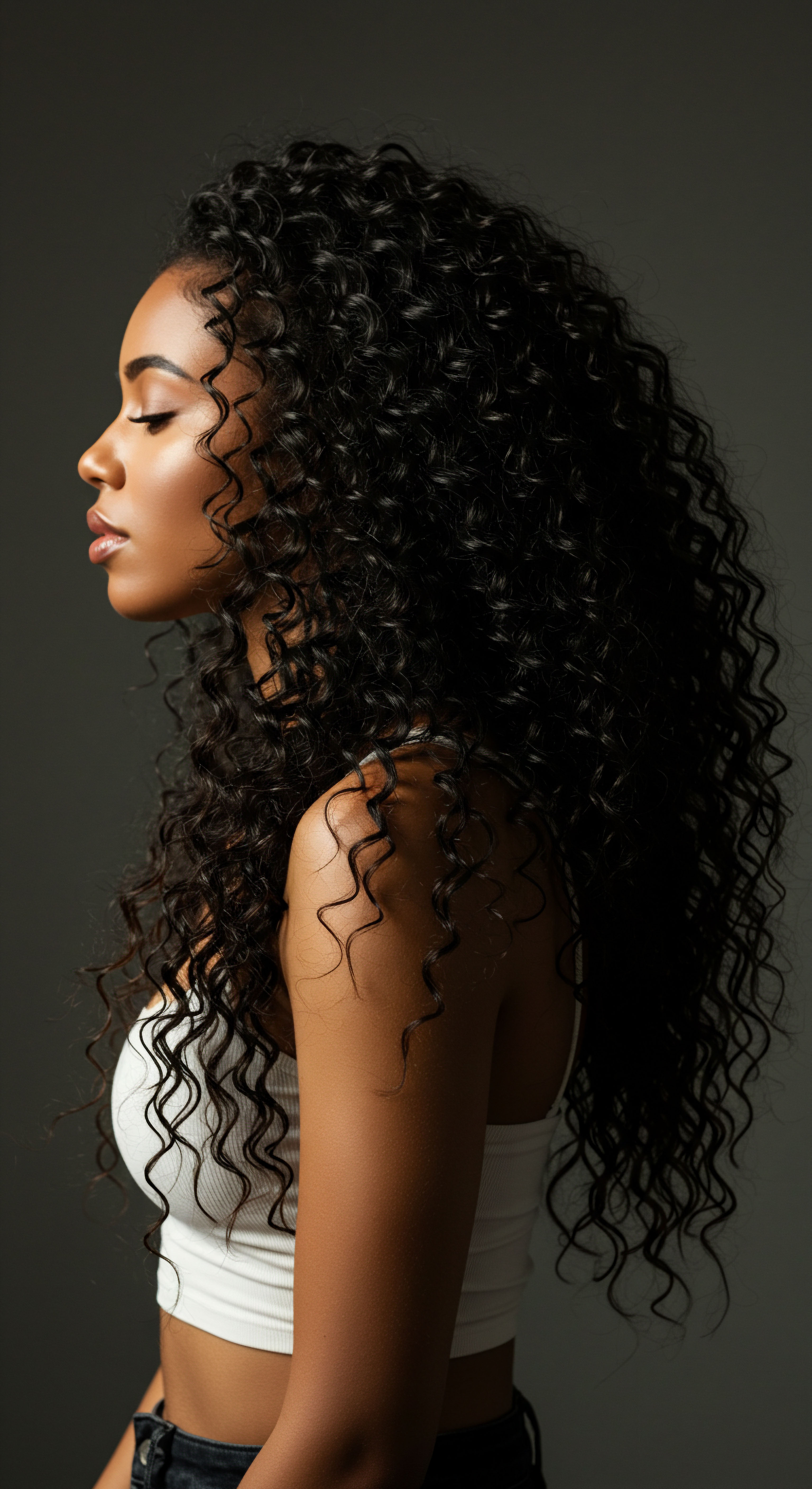
Natural Styling and Definition Techniques
The quest for definition in textured hair often involves techniques that encourage and preserve the natural curl pattern. Methods like “wash and go,” twist-outs, and braid-outs rely on the hair’s inherent structure to form distinct clumps and coils. The success of these techniques hinges on the hair’s ability to absorb and retain moisture, directly linking back to its porosity.
Hair with higher porosity will readily accept water and conditioning agents, but may also release them quickly. Conversely, lower porosity hair might resist initial wetting but hold onto moisture once saturated.
Achieving optimal definition often requires layering products in a specific order, a method sometimes referred to as the LOC (Liquid, Oil, Cream) or LCO (Liquid, Cream, Oil) method. This strategy aims to hydrate the hair with water or a water-based leave-in, seal that moisture with an oil, and then provide a lasting barrier with a cream. This tailored approach recognizes the unique challenge of moisture retention in textured hair, where natural oils from the scalp may struggle to travel down the curved hair shaft.
| Hair Porosity Type Low Porosity |
| Characteristics Tightly bound cuticles, resists water, prone to product buildup. |
| Product Focus Lightweight liquids, humectants, gentle heat for absorption. |
| Hair Porosity Type Medium Porosity |
| Characteristics Balanced cuticles, absorbs and retains moisture well. |
| Product Focus Versatile, can use a range of products. |
| Hair Porosity Type High Porosity |
| Characteristics Lifted cuticles, absorbs moisture quickly, loses it quickly. |
| Product Focus Heavy creams, oils, protein treatments for strength. |
| Hair Porosity Type Understanding porosity guides product selection for lasting hydration. |
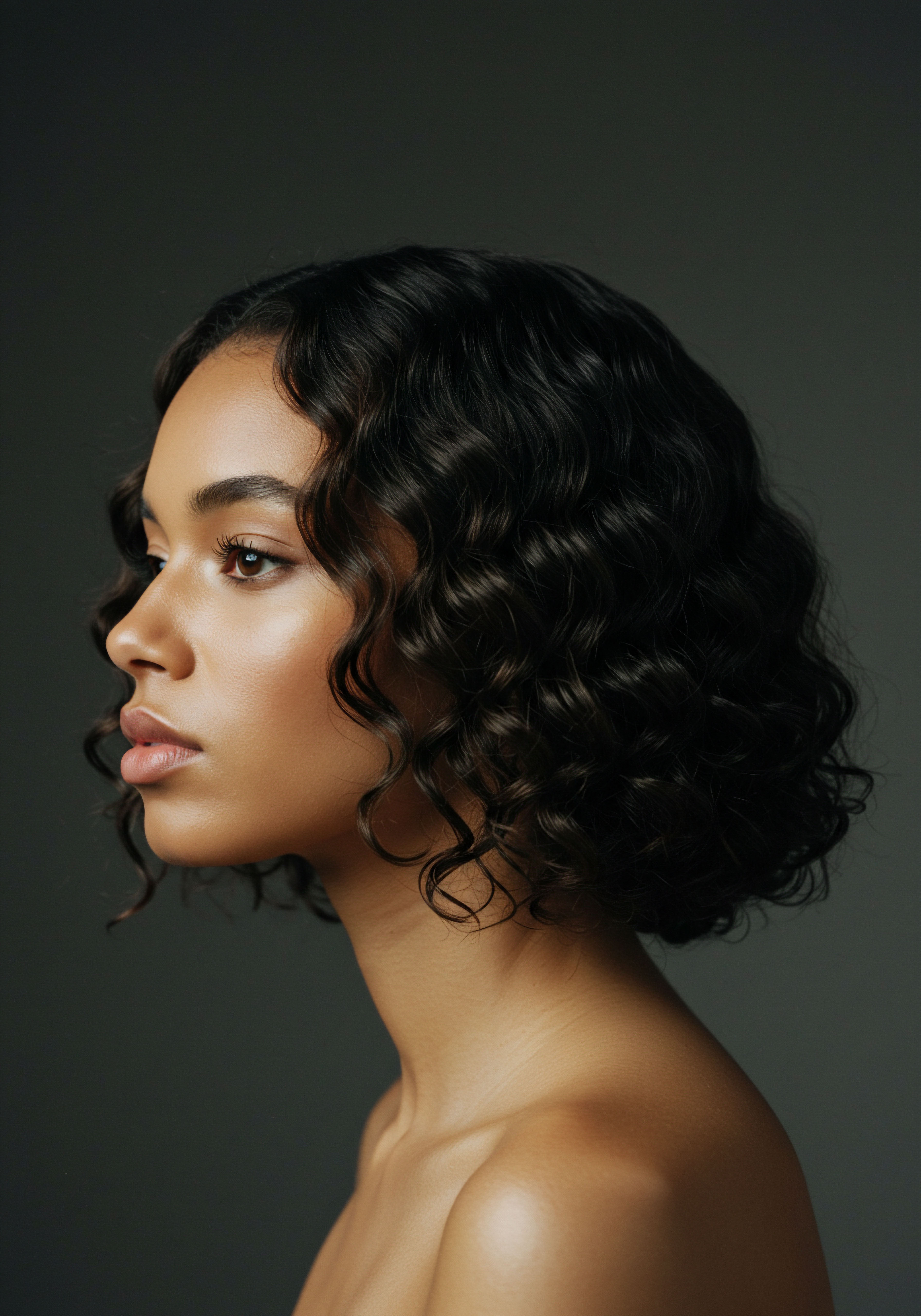
Wigs and Hair Extensions Mastery
Wigs and hair extensions, while offering transformative styling possibilities, also play a significant role in protecting textured hair. When installed and maintained correctly, they can reduce the need for daily manipulation of one’s own hair, thereby mitigating potential damage. The key lies in proper preparation of the natural hair underneath, ensuring it is clean, moisturized, and protected.
This might involve braiding the natural hair into cornrows or twists, creating a flat and stable base for the added hair. Improper installation or excessive tension from extensions can lead to traction alopecia, a form of hair loss caused by prolonged mechanical stress on the follicles.
The choice of wig cap material or extension attachment method is also important. Breathable materials help maintain scalp health, while gentle attachment techniques prevent undue stress on the hair follicles. The underlying hair still requires consistent care, including cleansing and moisturizing, even when concealed by a wig or extensions. This thoughtful approach ensures that the protective benefits are fully realized, safeguarding the natural hair beneath.
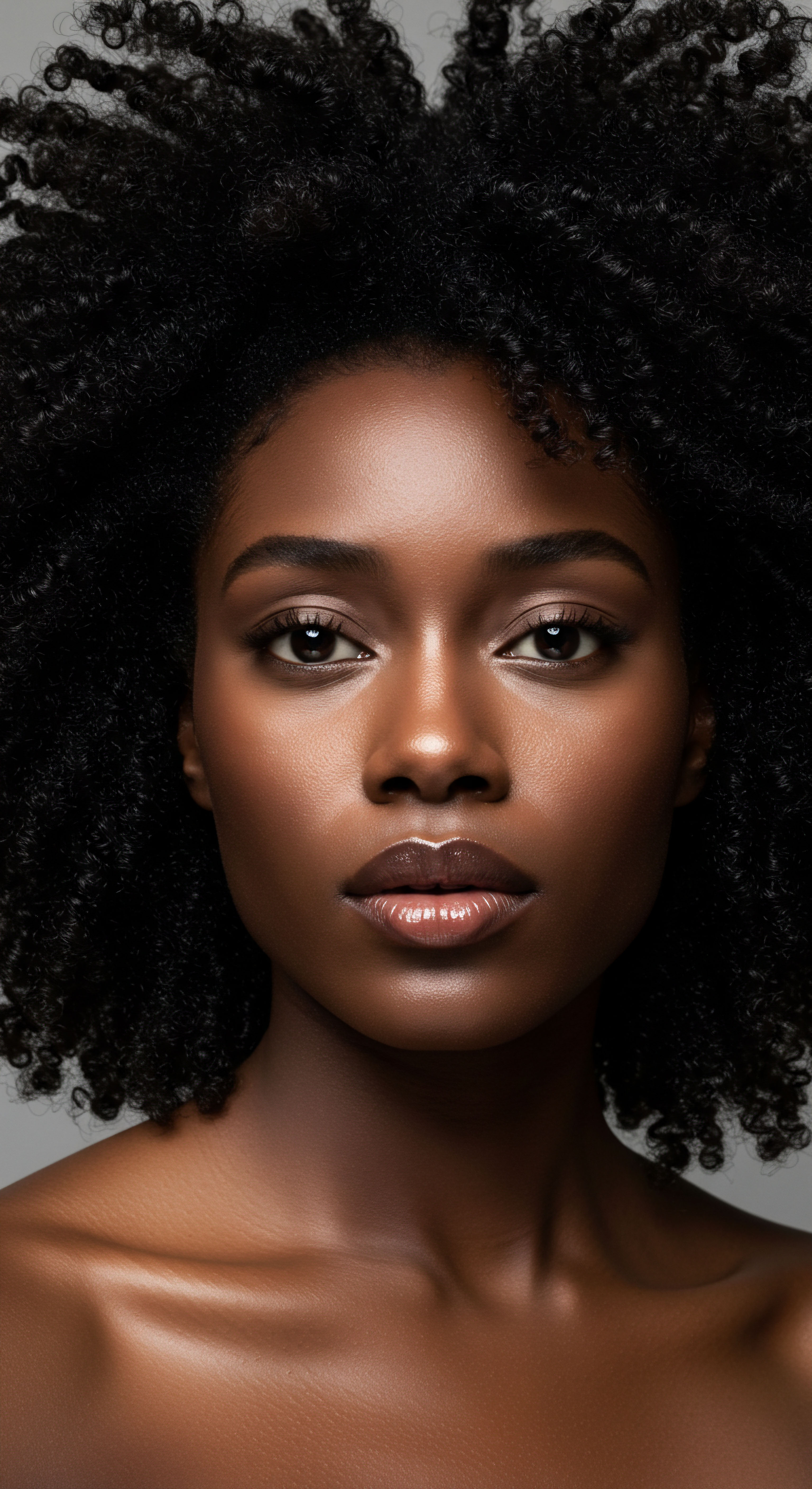
Heat Styling and Thermal Reconditioning
The application of heat to textured hair, whether through blow-drying, flat ironing, or curling, temporarily alters the hair’s hydrogen bonds, allowing it to take on a new shape. While offering a sleek or defined look, this process carries a risk of thermal damage, particularly for hair that is already predisposed to dryness and breakage. The unique structure of textured hair, with its uneven surface and potentially lifted cuticles, can make it more vulnerable to heat. When heat is applied without adequate protection, the cuticle can lift further, leading to moisture loss, frizz, and ultimately, protein degradation within the hair shaft.
Thermal reconditioning, or chemical straightening, permanently alters the hair’s disulfide bonds, rendering the hair straight. This process is highly aggressive and can severely compromise the hair’s structural integrity, making it even more fragile and prone to breakage. Research has even linked frequent use of hair relaxers to increased health risks.
A safety-first approach to heat styling involves using heat protectants, minimizing frequency, and opting for lower temperatures. This careful consideration preserves the hair’s inherent strength and resilience.

The Complete Textured Hair Toolkit
The right tools are indispensable companions on the journey of textured hair care. Unlike straight hair, which can often be detangled with a fine-tooth comb, textured hair benefits greatly from tools designed to navigate its curves and coils with minimal resistance. Wide-tooth combs, detangling brushes with flexible bristles, and even finger detangling are preferred methods to gently work through knots and minimize breakage. The goal is to separate strands without tearing or pulling, respecting the hair’s natural fragility.
Microfiber Towels, which absorb water without creating excessive friction, help reduce frizz and dry hair more gently than traditional terrycloth towels. Satin or silk pillowcases, or bonnets, are also critical tools for nighttime protection, preventing friction and moisture loss while sleeping. The careful selection of tools reflects a deeper understanding of textured hair’s physical characteristics, transforming routine care into a thoughtful, damage-reducing practice.
Deliberate care practices, from protective styles to tool selection, are essential for preserving the inherent strength and vitality of textured hair.

Relay
As we deepen our understanding, we move beyond the immediate and visible, inviting a consideration of the interconnected forces that shape textured hair’s existence. This exploration reaches into the scientific intricacies, the cultural legacies, and the subtle interplay of factors that truly define its care requirements. We consider not just what happens to hair, but why, examining the profound insights unearthed by research and the enduring wisdom passed through generations. Here, science and heritage converge, illuminating the multi-dimensional aspects of textured hair’s journey.
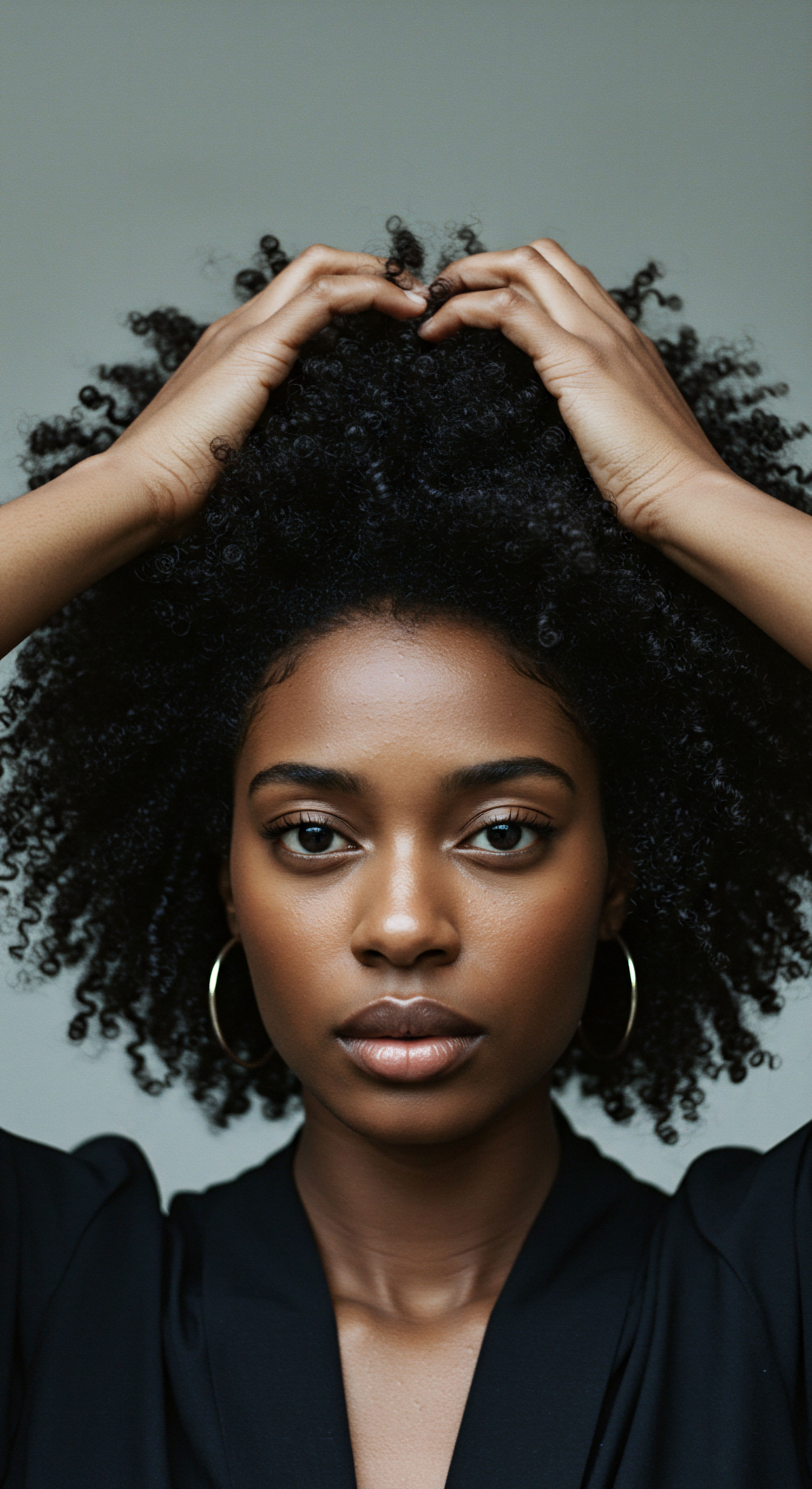
How does the Micro-Structure of Textured Hair Impact Its Hydration Capacity?
The very architecture of textured hair, visible only under a microscope, holds the key to its unique hydration dynamics. Unlike straight hair, which typically has a more uniform, circular cross-section, textured hair strands often possess an elliptical or flattened shape. This non-uniformity means that the cuticle, the outermost protective layer composed of overlapping scales, does not lie perfectly flat along the entire length of the strand, especially at the points where the hair bends and twists. These subtle lifts in the cuticle create pathways, increasing the hair’s surface area and its natural porosity.
Higher porosity means the hair readily absorbs water from the environment. While this might seem beneficial, it also implies that moisture can escape with equal ease. This rapid absorption and release of water, known as Hygral Fatigue, can weaken the hair over time, making it more prone to breakage. The internal structure also plays a role; the arrangement of keratin proteins within the cortex can vary, influencing how water molecules interact with the hair shaft.
This inherent structural predisposition to moisture loss necessitates a care regimen focused on consistent, lasting hydration, rather than just superficial wetting. Products designed to seal the cuticle and slow water evaporation become paramount for maintaining moisture balance and structural integrity.
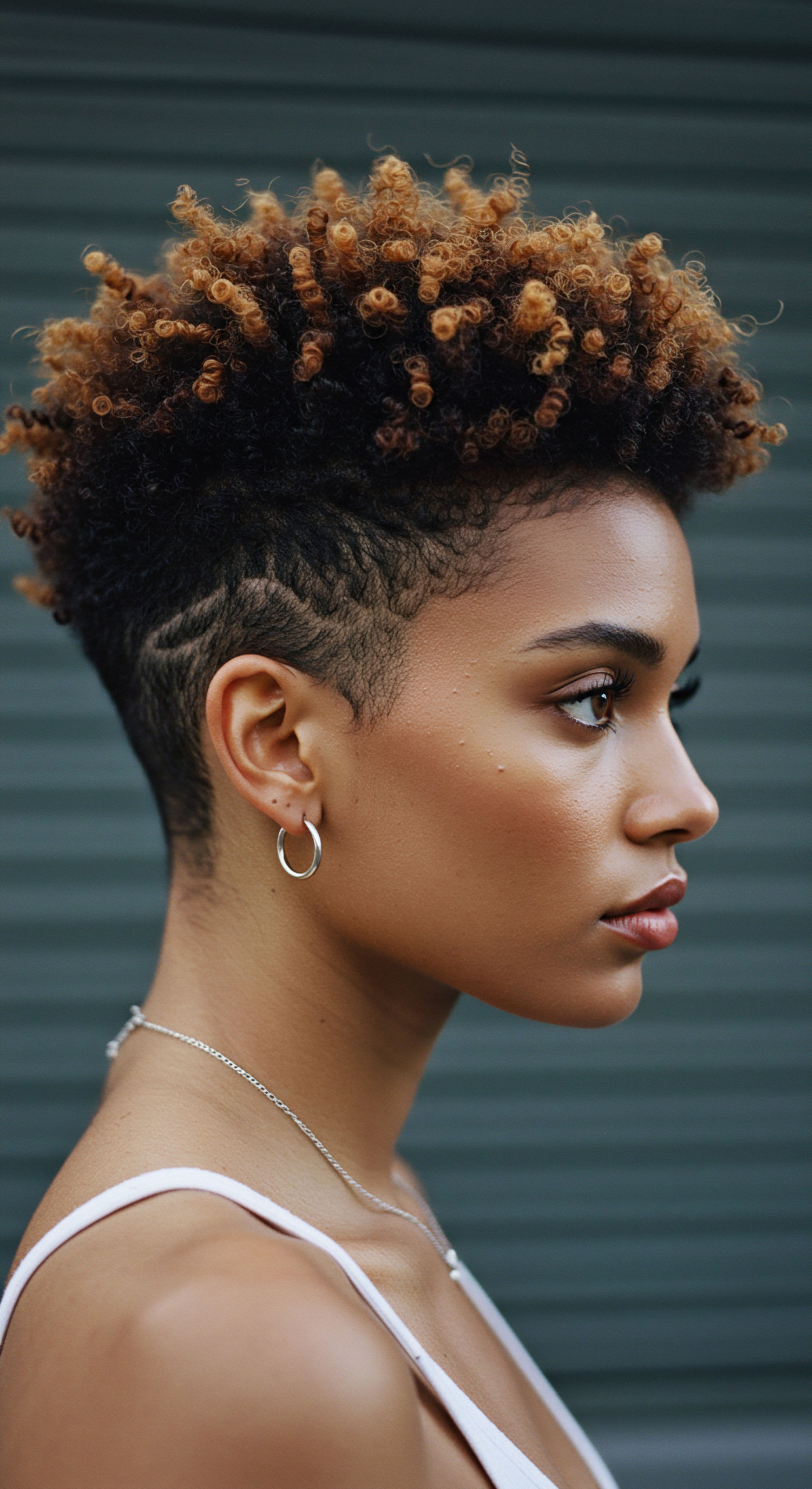
What Role do Cultural Traditions Play in Shaping Contemporary Textured Hair Care?
The story of textured hair care extends far beyond scientific laboratories and product formulations; it is deeply interwoven with centuries of cultural practices and historical resilience. For individuals of African descent, hair has historically been a powerful symbol of identity, status, spirituality, and even resistance. In ancient African societies, hairstyles communicated tribal affiliation, age, marital status, and social standing. Traditional care routines relied on natural ingredients like shea butter, coconut oil, and aloe vera, passed down through generations to nourish and protect the hair.
The transatlantic slave trade sought to strip enslaved Africans of their cultural identity, often through the forced alteration or shaving of hair. Yet, even in the face of oppression, hair practices persisted as quiet acts of defiance and cultural preservation. The use of headwraps, for instance, became a symbol of dignity and resilience, protecting hair while asserting cultural heritage. In the modern era, movements like the Civil Rights era saw the Afro hairstyle emerge as a powerful statement against Eurocentric beauty norms, celebrating Black pride and unity.
This historical context profoundly influences contemporary care. Many practices, like protective styling and the emphasis on natural ingredients, are echoes of ancestral wisdom. The ongoing dialogue about hair discrimination and the celebration of natural textures highlight that care for textured hair is not merely a cosmetic pursuit, but an act of self-affirmation and a connection to a rich heritage.
Research on hair care practices in African American women, for example, shows that traditional styling like braiding, while protective, can also contribute to conditions like traction alopecia if done with excessive tension. This underscores the need for culturally informed care that blends historical wisdom with modern scientific understanding to promote health and well-being.
The intricate micro-structure of textured hair, with its unique porosity and internal protein arrangement, fundamentally shapes its care needs, demanding a regimen focused on lasting moisture and gentle handling.
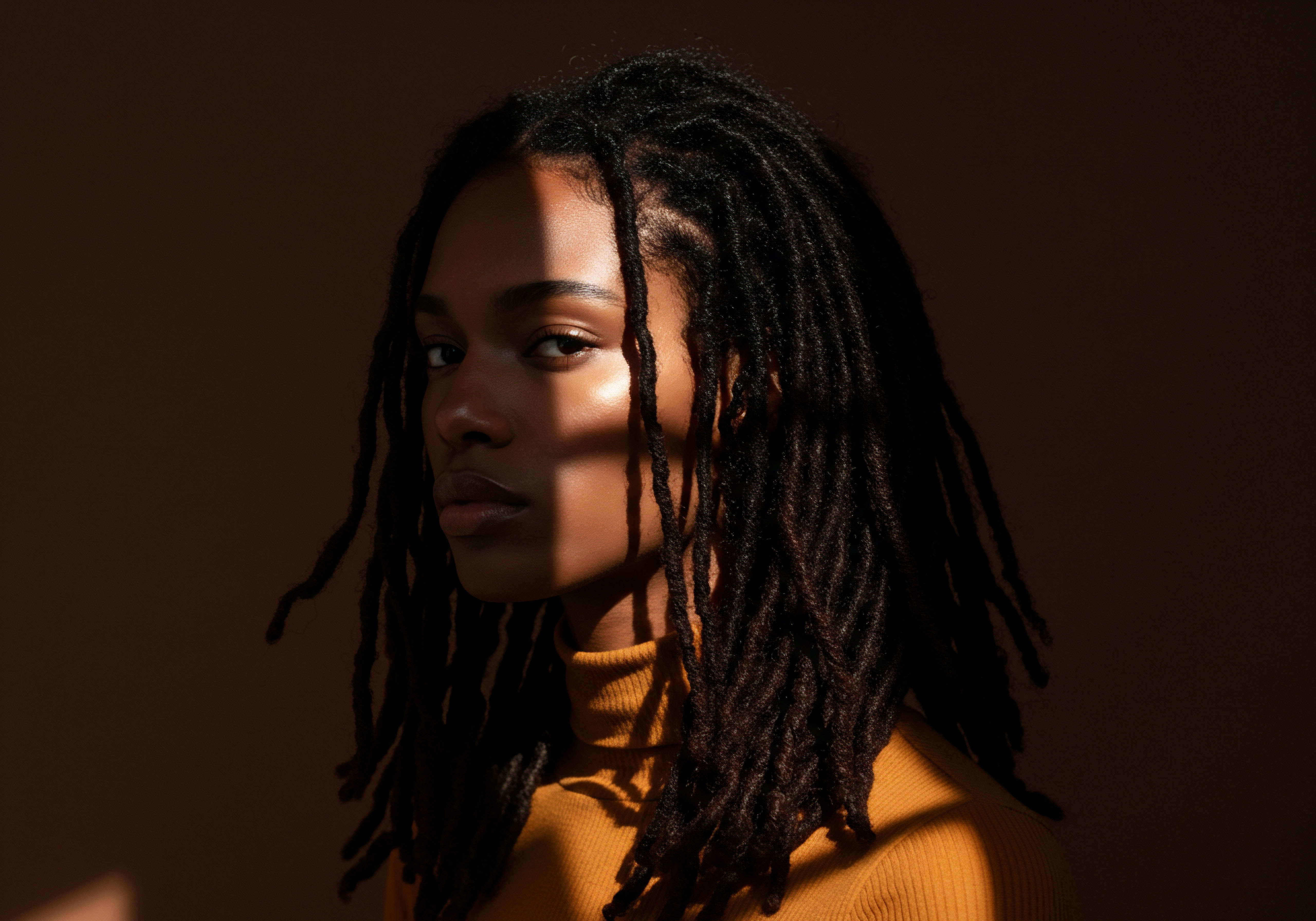
Understanding the Mechanical Properties of Textured Hair and Breakage Propensity
Textured hair possesses distinct mechanical properties that render it inherently more prone to breakage compared to straight hair. Studies have consistently shown that the break stress of hair decreases as curliness increases. This means that coily hair, for instance, requires less force to break than straight hair. This fragility is not a flaw, but a characteristic stemming from its unique helical geometry.
The twists and turns along the hair shaft create areas where stress concentrations can form when the hair is stretched or manipulated. These localized points of weakness are more susceptible to fracture.
A study on the mechanical properties of textured hair found that it breaks approximately Ten Times Faster Than Straight Hair. This statistic, while striking, underscores the critical need for gentle handling and minimal manipulation. When dry, these shear stresses can create cracks in the cell membrane complex between cortical cells or between the cuticle and the cortex, leading to breakage.
Furthermore, chemical treatments like relaxers significantly damage hair proteins, making the hair even more fragile. The implication for care is clear ❉ techniques that reduce mechanical stress, such as careful detangling, protective styling, and minimizing chemical processing, are not merely preferences but fundamental requirements for preserving length and maintaining the health of textured hair.
| Property Follicle Shape |
| Textured Hair (General Tendency) Elliptical to flattened |
| Straight Hair (General Tendency) Round |
| Property Cuticle Layering |
| Textured Hair (General Tendency) Can be lifted at curves, increasing porosity |
| Straight Hair (General Tendency) Lays flatter, lower porosity |
| Property Break Stress |
| Textured Hair (General Tendency) Lower (more prone to breakage) |
| Straight Hair (General Tendency) Higher (more resilient) |
| Property Moisture Retention |
| Textured Hair (General Tendency) Higher porosity, loses moisture easily |
| Straight Hair (General Tendency) Lower porosity, retains moisture more readily |
| Property Natural Oil Distribution |
| Textured Hair (General Tendency) More challenging due to coils |
| Straight Hair (General Tendency) Easier along straight shaft |
| Property These general tendencies highlight the need for tailored care approaches. |
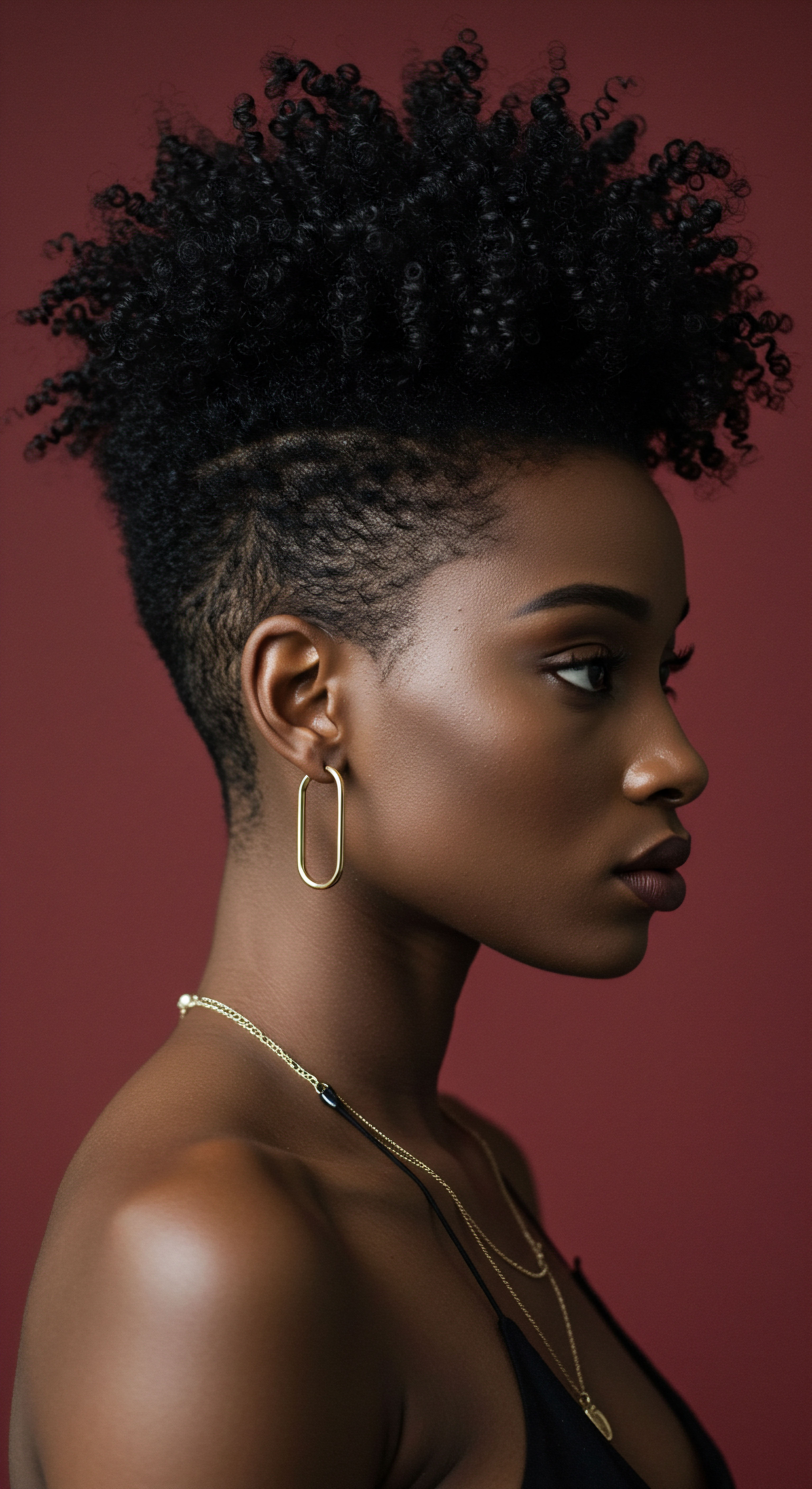
The Science of Environmental Factors and Their Impact on Textured Hair
Environmental conditions exert a powerful influence on the behavior of textured hair, particularly humidity. Hair’s chemical makeup is remarkably sensitive to airborne hydrogen, so much so that some hygrometers (devices measuring humidity) actually use hair for their readings. When humidity is high, hair readily absorbs moisture from the air.
This absorption causes the hair fiber to swell, disrupting the hydrogen bonds within the keratin proteins that give hair its temporary shape. For textured hair, this can lead to a loss of curl definition, increased frizz, and a feeling of unruliness.
Conversely, in low humidity environments, textured hair can become excessively dry and prone to static electricity, leading to flyaways and increased breakage. The challenge for textured hair lies in its propensity to absorb and release moisture rapidly, making it particularly vulnerable to fluctuations in environmental humidity. Effective care strategies involve creating a protective barrier against moisture extremes, using products that seal the cuticle and maintain an optimal internal moisture balance, irrespective of the external atmospheric conditions. This proactive stance helps the hair remain resilient and manageable, despite the whims of the weather.

Reflection
The journey through the intricate world of textured hair care reveals a truth far richer than mere product application or styling trends. It is a story of biological marvel, historical endurance, and personal affirmation. To truly care for these unique strands is to engage in a dialogue with their inherent design, to honor the whispers of ancestry, and to apply the insights of science with a gentle, knowing hand.
Each curl, each coil, carries a legacy, inviting us to approach its needs not as challenges to overcome, but as distinctive qualities to be celebrated and sustained. The path to vibrant, healthy textured hair is a continuous conversation, one rooted in understanding, respect, and a profound appreciation for its singular beauty.

References
- Robbins, C. R. (2012). Chemical and Physical Behavior of Human Hair. Springer.
- Khanna, A. (2018). Hair Care and Styling ❉ A Comprehensive Guide. Apple Academic Press.
- Giacomoni, P. U. & Maibach, H. I. (Eds.). (2019). Hair and Hair Diseases. Springer.
- Bouillon, C. & Wilkinson, J. B. (Eds.). (2005). The Science of Hair Care. CRC Press.
- Trueb, R. M. (2001). The Difficult Hair. Karger.
- Loussouarn, G. (2019). Hair Science. Cosmetics & Toiletries.
- Porter, C. (2023). A Deep Dive into Curly Hair. The Eco Well Podcast.
- Cruz, C. F. & Van Den Bergh, B. A. (2008). Hair lipids and their interaction with proteins. Journal of Cosmetic Science, 59(4), 303-313.
- Kamath, Y. K. Dansizer, H. S. & Rieger, M. M. (1987). Mechanical properties of human hair. Journal of the Society of Cosmetic Chemists, 38(1), 1-13.
- Laatsch, A. & Noll, B. (2012). Hair proteomics. Journal of Cosmetic Science, 63(2), 125-135.
- Rele, S. & Mohile, R. (2003). Effect of mineral oil, sunflower oil, and coconut oil on prevention of hair damage. Journal of Cosmetic Science, 54(2), 175-192.